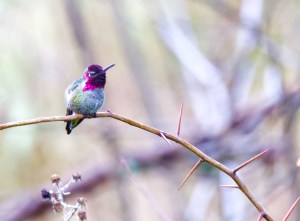Birdwatching The osprey: A fascinating bird of prey
Published 9:19 am Tuesday, July 28, 2015

- Osprey are a familiar raptor in Pacific County, building their untidy-looking nests atop utility poles and snags within easy reach of water bodies where they hunt for fish. (Their informal name is “fish hawk.”)
By Dr. Madeline A. Kalbach
Trending
The osprey is a large raptor that breeds on the Peninsula and in the Willapa National Wildlife Refuge. It is about two feet in length and has wingspan of just over five feet. It has a small, white, head and a dark crown. In flight it shows long crooked wings that appear arched with drooping wing tips. Its wing tips are black and look as if they have been dipped in one of those old-fashioned bottles of black ink.
The osprey is a diurnal, fish-eating bird of prey. Most field guides indicate that 99 percent of its diet consists of live fish, and it is the only bird for which this is true. It has specialized feet for snaring and carrying fish. Barbs on the feet help it to grasp a fish and carry it to its nest. The osprey always carries the fish headfirst so that it is at its aerodynamic best during flight. In addition, it has four toes that are the same length. The tarsi of the toes are reticulate and the talons are rounded. Thus, it can grip a fish with three toes forward and one backward or two forward and two backward. The two and two formation is used most often because it provides the most stable grip during flight.
An interesting new feature of our landscape is the communications tower. Ospreys often find them to be an appealing nesting sight. They usually select a snag, utility pole, fork of a tree or a man-made platform near water. I suspect it likes the communication tower because the nest stays relatively more intact from year to year reducing the amount of annual nest repair. Snags fall down, and nests may blow off of platforms in a windstorm, but the communication tower has supports that keep the osprey’s building materials, such as sticks, driftwood and seaweed from being blown away. In addition, it is as high in the air as its usual choices.
Trending
The osprey is unusual for three reasons. First it is the only bird whose diet consists mainly of live fish. Secondly, it hovers over the water and dives feet first (unique among raptors) to grasp prey. Thirdly, it is widely distributed throughout the world. It is found on very continent except for Antarctica. In our area the osprey is common except in fall and winter. An active nest can be seen at Black Lake atop a shoreline tree. Last year a nest was built on the communication tower across from Black Lake. Another communication tower north of Long Beach can be seen from the ocean beach. The last time I checked, two youngsters were sitting up tall in the nest. They were probably waiting for a snack!
Snags abound and communication towers are present. Check them out. Young are still in the nest. Look up high! You may see one of our osprey’s beautiful, large, bulky, stick nests.






